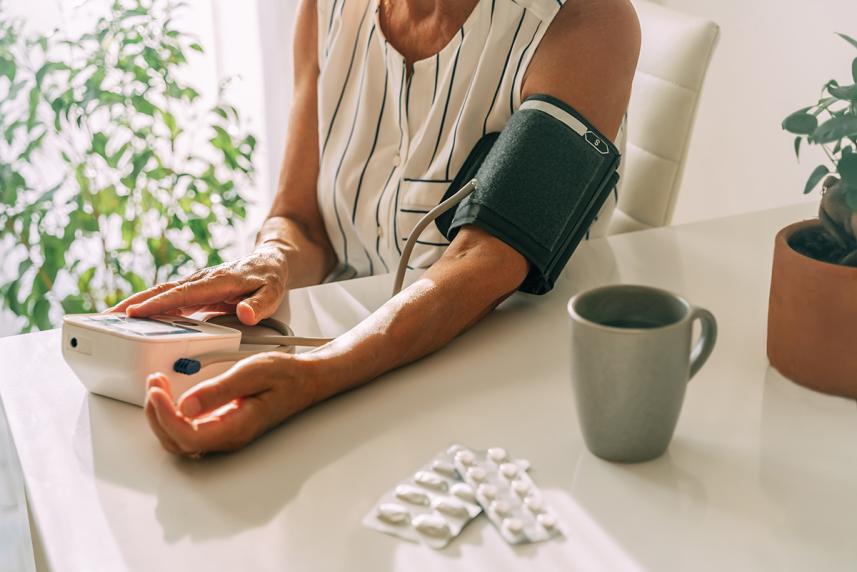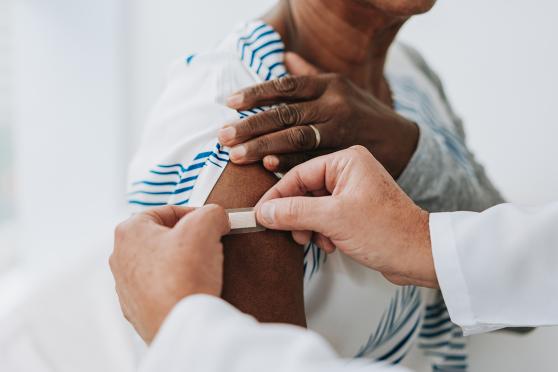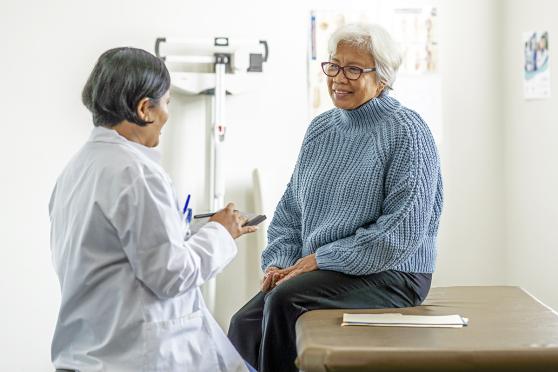3 simple health checks you can do in 3 minutes
Don’t overlook the most important member of your health care team: you.

It’s important to go for regular medical screenings with your primary care physician (PCP). And it’s just as important to monitor your own health at home. These three quick and easy at-home health checks are a great place to start.
1. Monitor your blood pressure
A digital blood pressure monitor is a convenient way to keep tabs on your heart health at home. Here’s how to use it.
- Sit comfortably with both feet on the ground.
- Lay your arm on a flat surface such as a table or arm rest.
- Wrap the cuff around your arm, above the bend in your elbow. It should be against your skin.
- Begin taking your blood pressure. Try to sit still.
- Take at least two readings. Wait one minute in between them.
- Log your results, including the date and time of day.
When to call your doctor: If the top number of your blood pressure reading is above 130, or the bottom number is above 80. That is considered high blood pressure (hypertension), according to the American Heart Association.
You can buy a home blood pressure cuff with your OTC allowance using your IBX Care Card. Visit ibxmedicare.com/carecard for more information.
2. Weigh yourself
Unless you’re overweight, your weight should generally stay the same as you get older. If you notice yourself gaining or losing weight without trying, it could be a side effect of an underlying health condition.
Certain hormonal issues can cause unexpected weight gain or loss, as can certain types of heart disease (like congestive heart failure), thyroid issues, and even cancer.
Keeping tabs on your weight is a good way to check for signs of these conditions developing.
Invest in a digital scale and weigh yourself at the same time each day, ideally in the morning before breakfast.
When to call your doctor: If you gain more than 3 pounds in 24 hours, or 5 pounds in one week, or if you lose 5 percent of your body weight over 6 to 12 months without trying.
3. Test your balance
Having good balance can help prevent falls. For these tests, you may want to stand near a counter or railing.
- Heel-to-toe walk: Imagine you are on a tightrope: Place the heel of one foot directly in front of the toes of your other. Your toes and heel should briefly touch. Walk for 10 seconds.
- Stand on one foot: Plant one foot firmly on the ground. Bend and lift your opposite knee so your foot is off the ground. Hold for 10 seconds on each side.
When to call your doctor: If you can’t perform these tests in the given time frame.
Your IBX Care Card is automatically reloaded each quarter (every three months) with your OTC allowance. The balance remaining on the card at the end of a quarter does not carry forward to the next quarter if it is not used. OTC items purchased from non-participating retailers will not be covered.


